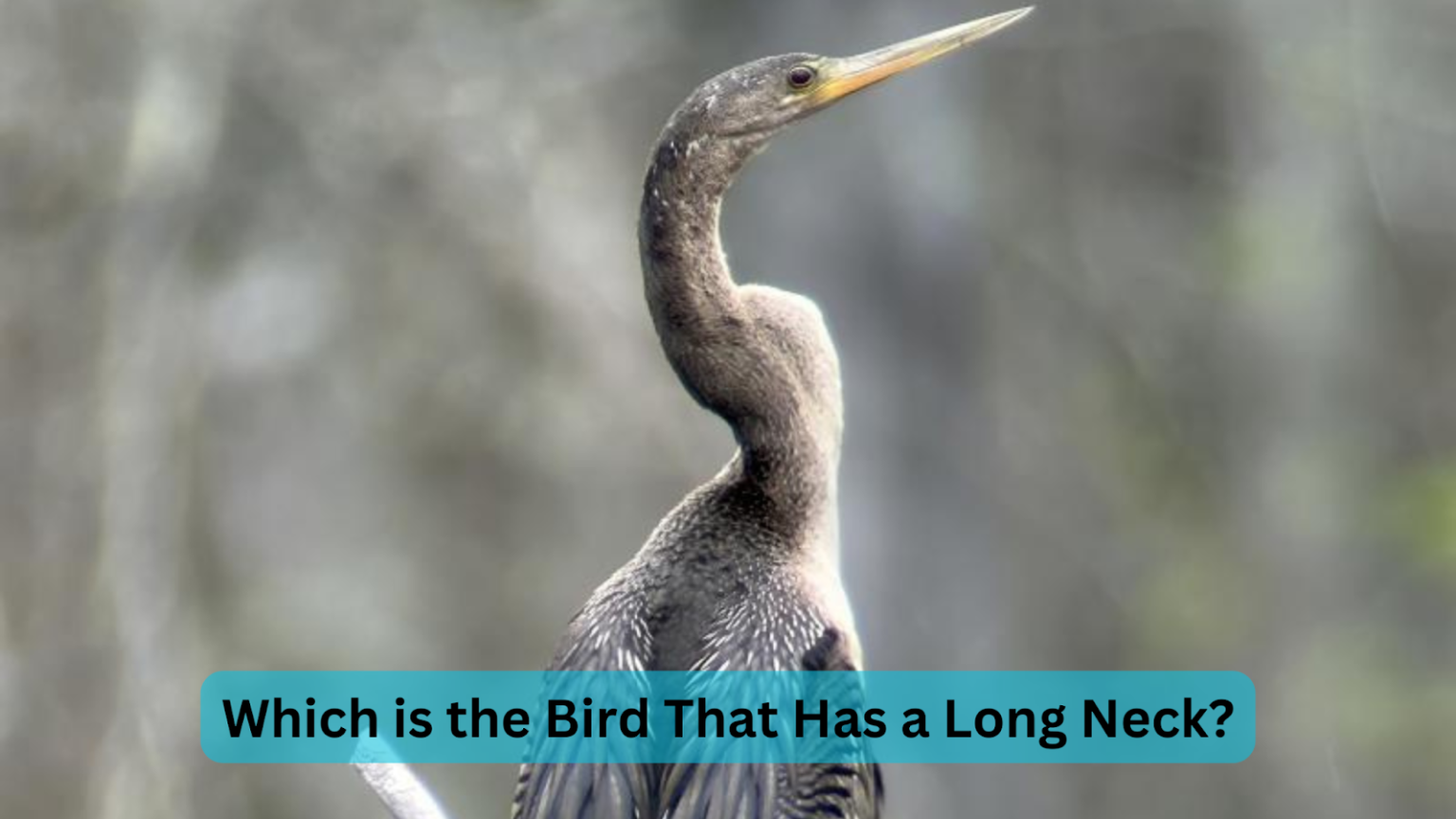Birds with long necks are some of the most fascinating creatures in the world. They use their lengthy necks for feeding, hunting, and courtship displays. If you’re curious about which is the bird that has a long neck or want to learn about the various species with this unique feature, this guide is for you. From the towering ostrich to the graceful flamingo, each bird has its special adaptations. Let’s explore 15 remarkable birds known for their long necks and discover what makes each one unique and captivating.
Graceful Giants: Birds with Long Necks
1. Ostrich
The ostrich, the largest bird in the world, boasts an impressively long neck that helps it spot predators from afar. They are native to Africa and are known for their incredible running speed.
Ostriches are also known for their large, powerful legs, which they use to defend themselves from threats.
| Feature | Description |
| Scientific Name | Struthio camelus |
| Height | Up to 9 feet |
| Weight | Up to 320 pounds |
| Diet | Omnivorous |
| Habitat | Savannas, deserts, woodlands |
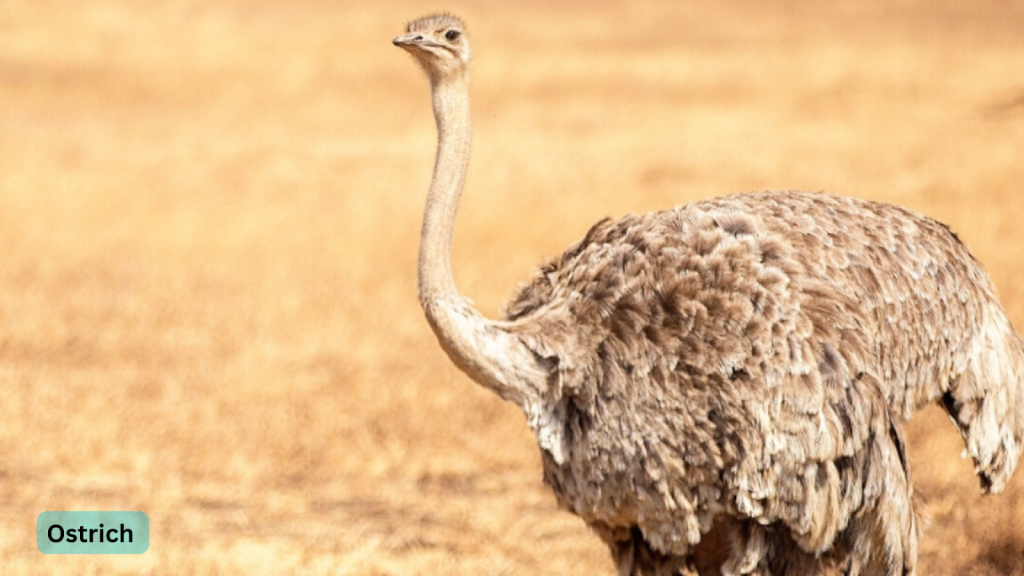
2. Greater Flamingo
known for its pink feathers, the Greater Flamingo’s long neck helps it filter-feed in saline or alkaline lakes. Found across Africa, the Middle East, and southern Europe.Flamingos are social birds, often seen in large flocks, which can number in the thousands.
| Feature | Description |
| Scientific Name | Phoenicopterus roseus |
| Height | Up to 5 feet |
| Weight | 4.4 to 8.8 pounds |
| Diet | Crustaceans, algae, plankton |
| Habitat | Shallow lakes, lagoons, estuaries |
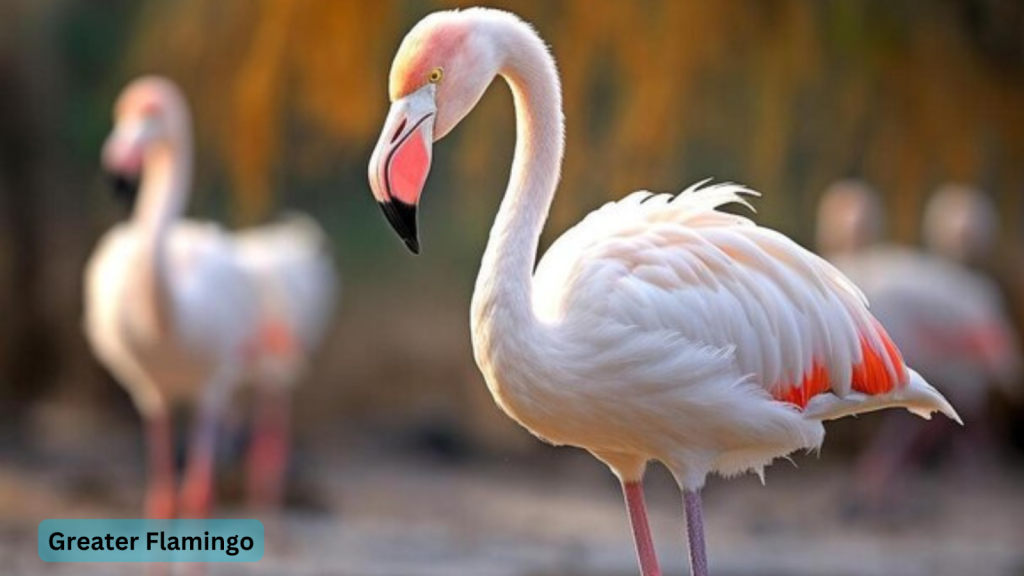
3. Great Blue Heron
This tall bird with a blue-gray plumage uses its long neck to catch fish. It inhabits North and Central American wetlands. Great Blue Herons are known for their patience, often standing still for long periods while waiting to strike at prey.
| Feature | Description |
| Scientific Name | Ardea Herodias |
| Height | Up to 4.5 feet |
| Weight | 5 to 6 pounds |
| Diet | Fish, amphibians, reptiles, mammals |
| Habitat | Freshwater and saltwater areas |
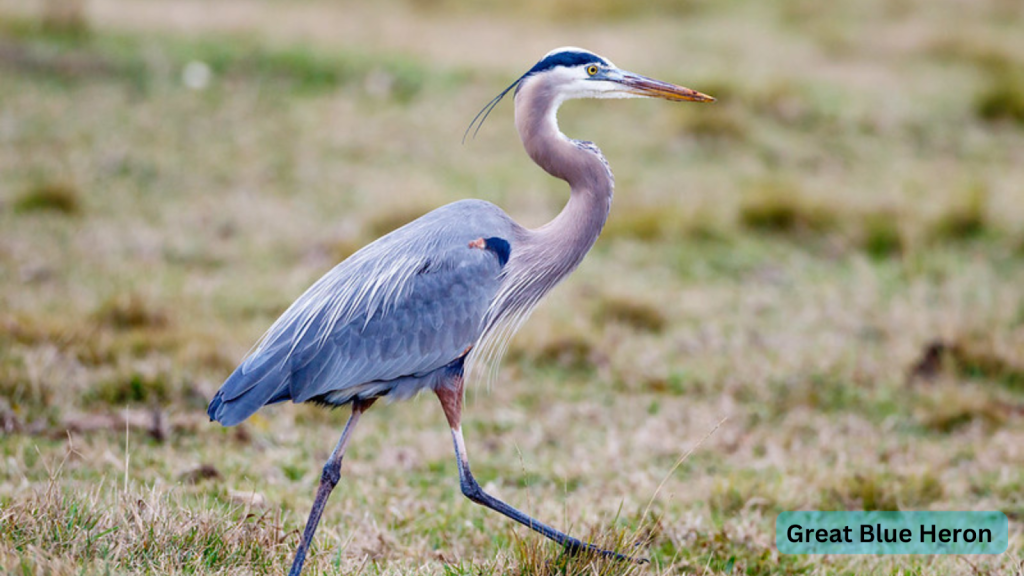
4. Goliath Heron
The largest heron species, the Goliath Heron, uses its extensive neck to hunt in African wetlands. Their hunting strategy often involves slow, deliberate movements to avoid startling their prey.
| Feature | Description |
| Scientific Name | Ardea goliath |
| Height | Up to 5 feet |
| Weight | 8.8 to 11 pounds |
| Diet | Fish, amphibians, small mammals |
| Habitat | Lakes, rivers, marshes |
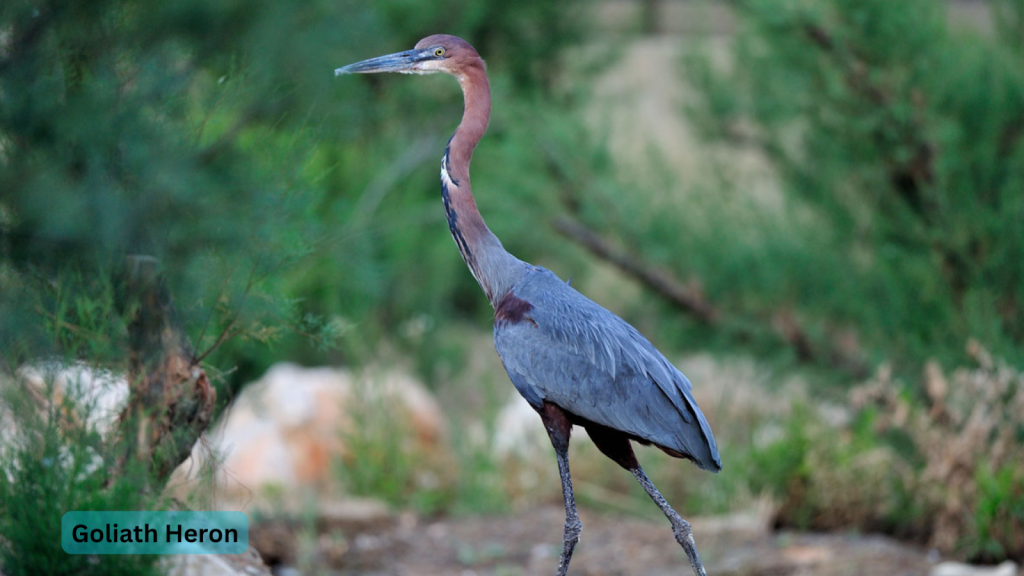
5. Snowy Egret
With striking white plumage and a long neck, Snowy Egrets are found in wetlands across the Americas. They are known for their lively foraging behavior, often stirring the water with their feet to catch prey.
| Feature | Description |
| Scientific Name | Egretta thula |
| Height | Up to 2.3 feet |
| Weight | 13 ounces |
| Diet | Fish, crustaceans, insects |
| Habitat | Marshes, shorelines, estuaries |
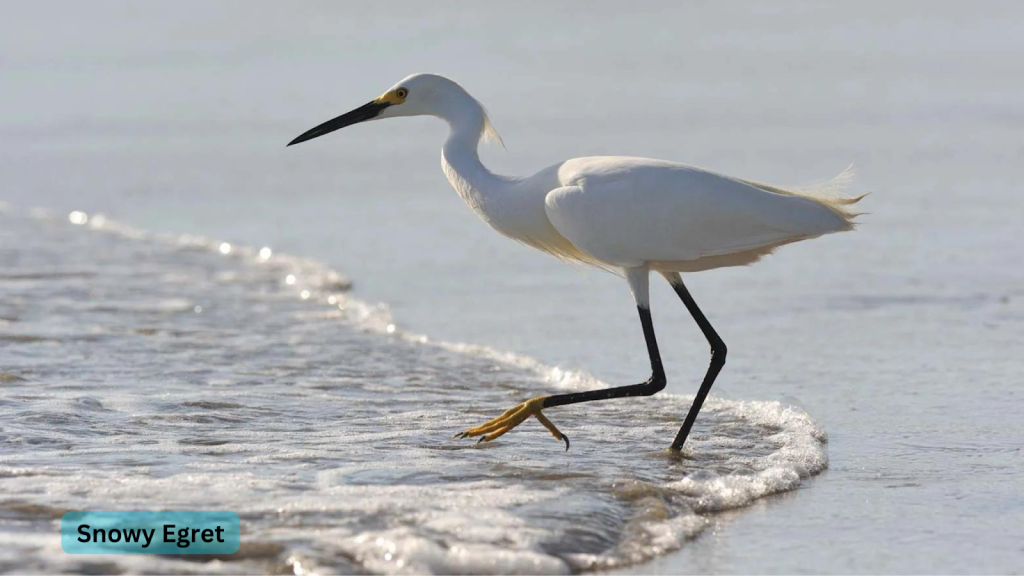
6. Jabiru
.A large stork with a black and white body and a distinctive red neck band, found in Central and South American wetlands. Jabirus are often seen wading through shallow waters in search of food, using their long necks to reach prey.
| Feature | Description |
| Scientific Name | Jabiru mycteria |
| Height | Up to 5 feet |
| Weight | 15 to 20 pounds |
| Diet | Fish, amphibians, small mammals |
| Habitat | Wetlands, rivers, ponds |
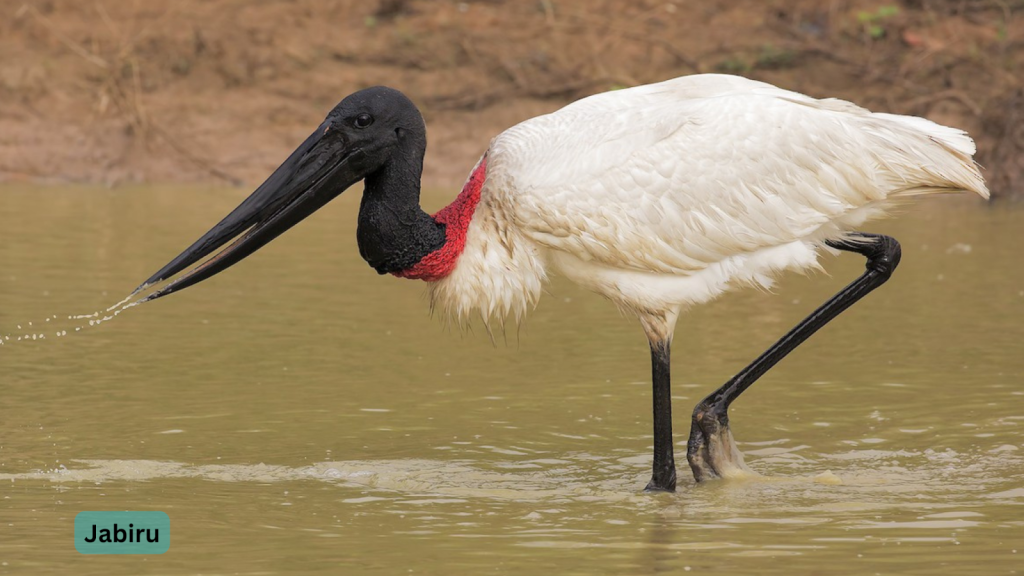
7. Marabou Stork
Known as the “undertaker bird,” this stork has a featherless head and neck, aiding its scavenging habits in sub-Saharan Africa. Marabou Storks play a crucial role in their ecosystem by cleaning up carrion and reducing the spread of disease.
| Feature | Description |
| Scientific Name | Leptoptilos crumenifer |
| Height | Up to 60 inches |
| Weight | Up to 20 pounds |
| Diet | Carrion, small mammals, birds |
| Habitat | Sub-Saharan Africa, various habitats |
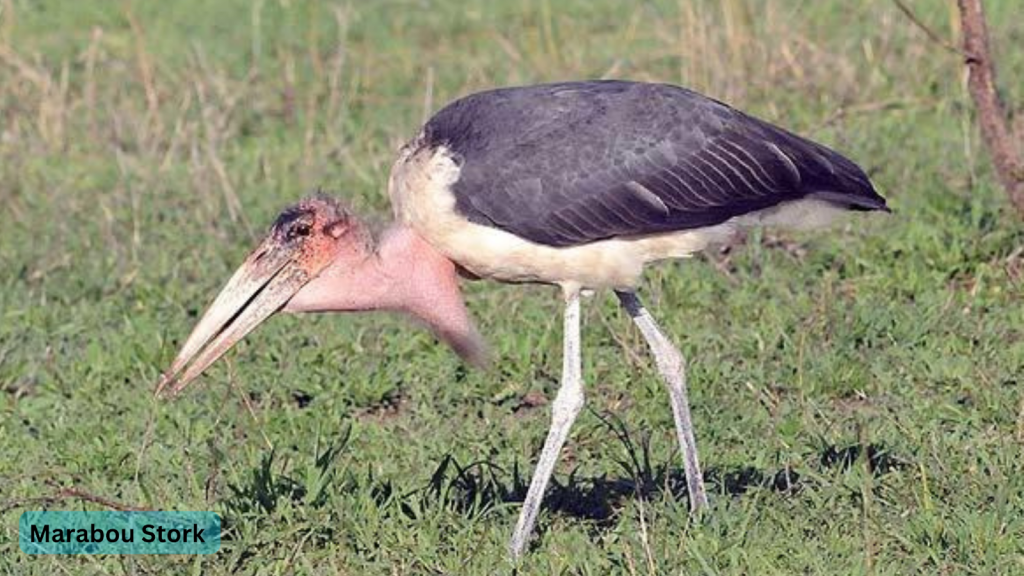
8. Great Egret
A widespread egret known for its long, white neck and yellow bill, found in wetlands globally. Great Egrets are often seen in mixed flocks with other waterbirds, benefiting from communal foraging.
| Feature | Description |
| Scientific Name | Ardea alba |
| Height | Up to 3.3 feet |
| Weight | 2.2 pounds |
| Diet | Fish, amphibians, reptiles, insects |
| Habitat | Marshes, lakes, rivers, coasts |
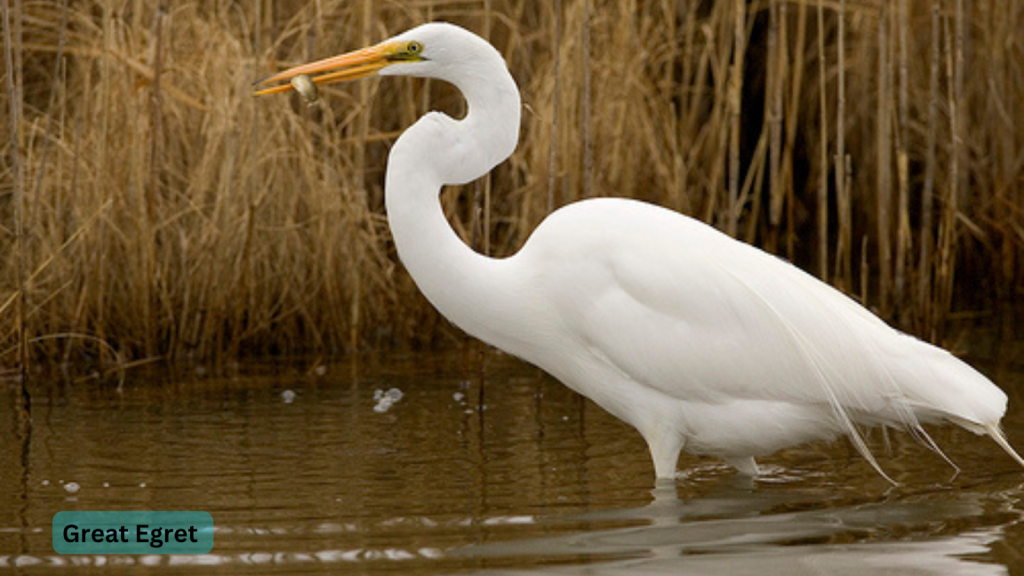
9. Anhinga
Also known as the “snake bird” due to its long neck, the Anhinga is found in freshwater habitats in the Americas. Anhingas are excellent swimmers, using their necks to spear fish underwater.
| Feature | Description |
| Scientific Name | Anhinga anhinga |
| Height | Up to 3 feet |
| Weight | 2.5 pounds |
| Diet | Fish, amphibians, crustaceans |
| Habitat | Freshwater lakes, rivers, swamps |
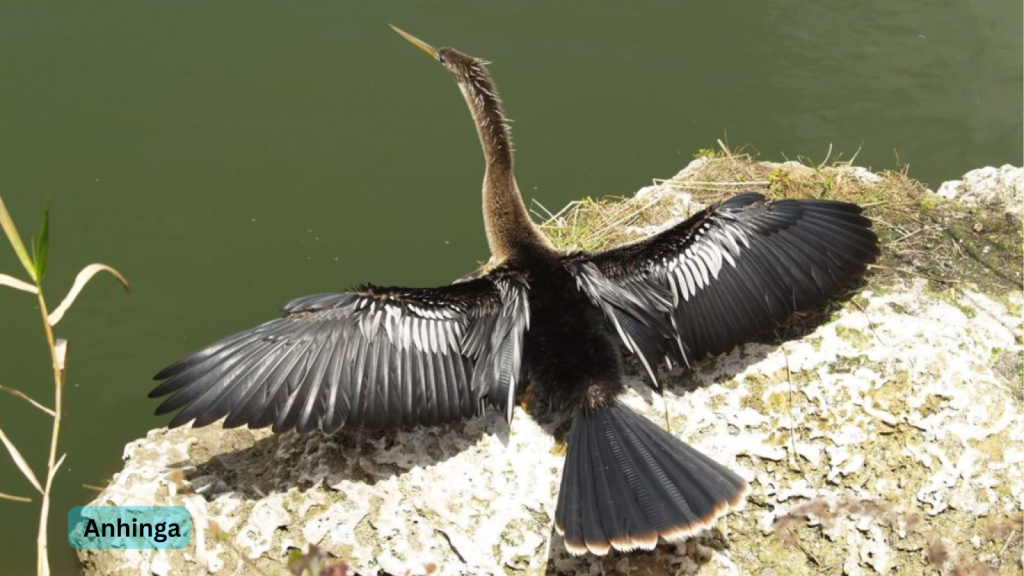
10. Cattle Egret
A small, white egret often seen near livestock, helping control insect populations.Cattle Egrets are adaptable and can be found in a variety of environments, from grasslands to urban areas.
| Feature | Description |
| Scientific Name | Bubulcus ibis |
| Height | Up to 2 feet |
| Weight | 13 Ounces |
| Diet | Insects, fish, amphibians |
| Habitat | Grasslands, wetlands |
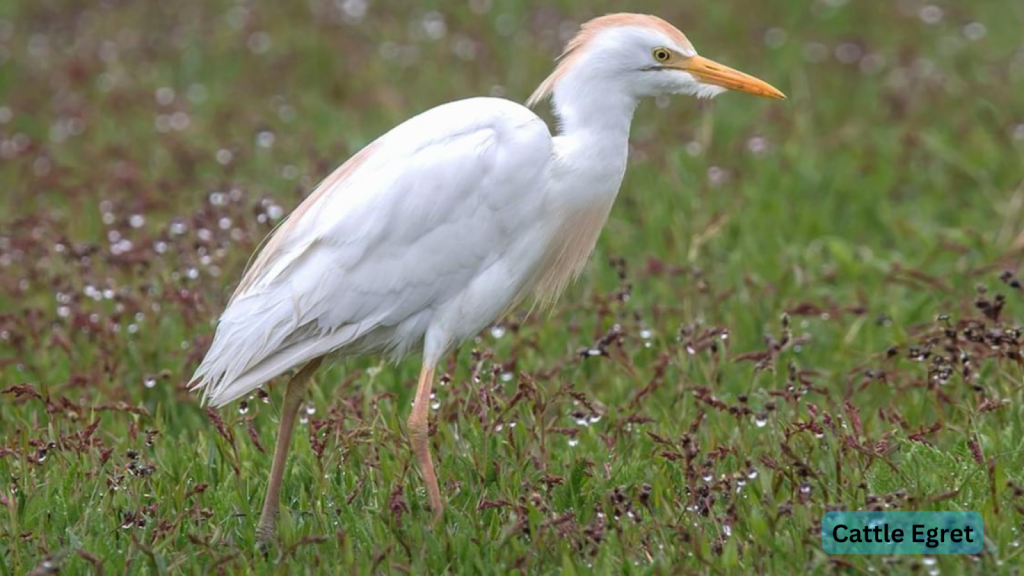
11. Whooping Crane
The tallest bird in North America noted for its white body and long neck, is found in marshes and wetlands. Whooping Cranes are critically endangered and are part of significant conservation efforts to protect and restore their populations.
| Feature | Description |
| Scientific Name | Grus americana |
| Height | Up to 5 feet |
| Weight | 15 pounds |
| Diet | Crustaceans, small vertebrates |
| Habitat | Marshes, wetlands |
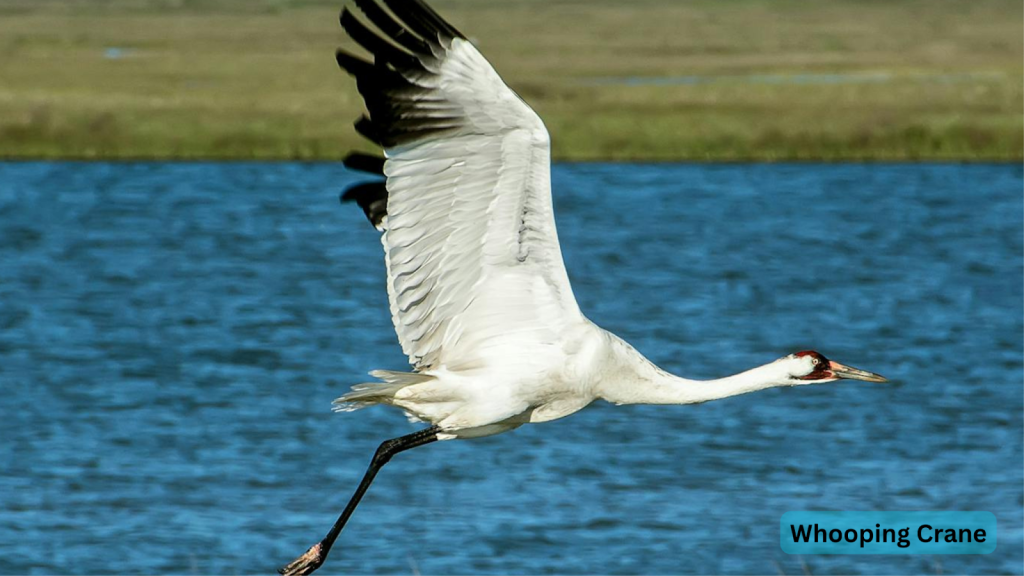
12. Sandhill Crane
A large crane with a long neck, gray plumage, and a distinctive red forehead, found across North America. They are known for their loud, bugling calls, which can be heard from a great distance.
| Feature | Description |
| Scientific Name | Antigone canadensis |
| Height | Up to 4 feet |
| Weight | 10 pounds |
| Diet | Plants, grains, small animals |
| Habitat | Wetlands, grasslands |

13. Black-necked Stilt
This shorebird, with its long, thin neck and distinctive black-and-white coloration, is found in shallow wetlands. Black-necked Stilts are agile foragers, often seen wading through water in search of insects and small aquatic creatures.
| Feature | Description |
| Scientific Name | Himantopus mexicanus |
| Height | Up to 1.5 feet |
| Weight | 6 ounces |
| Diet | Insects, crustaceans |
| Habitat | Shallow wetlands, marshes |
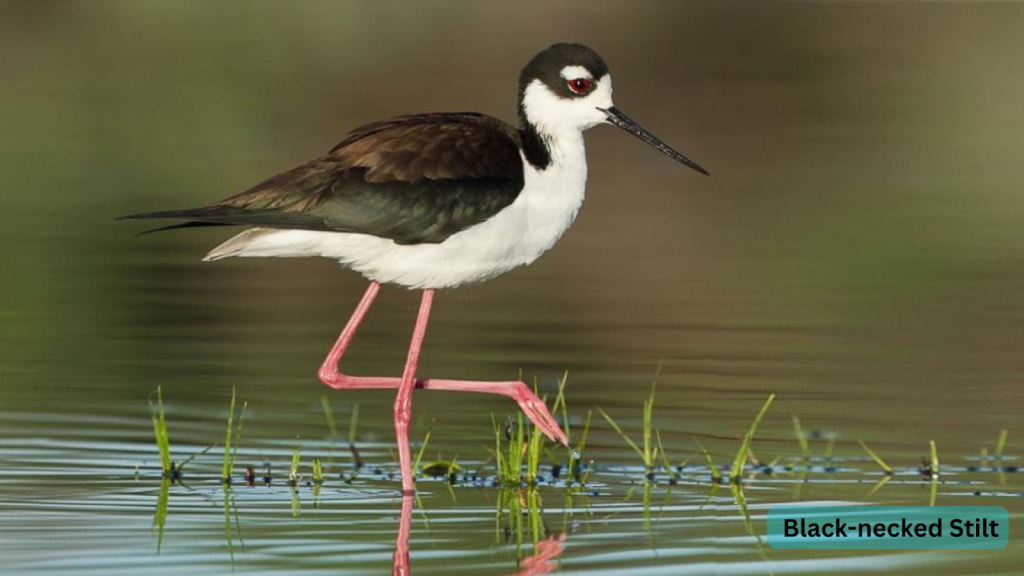
14. Giant Ibis
The largest member of the ibis family, with a long neck and a critically endangered status, is found in Southeast Asian forests. Giant Ibises are rare and elusive, making them a prized sighting for bird watchers.
| Feature | Description |
| Scientific Name | Thaumatibis gigantea |
| Height | Up to 3.3 feet |
| Weight | 10 pounds |
| Diet | Insects, small vertebrates |
| Habitat | Forests, wetlands |

15. Purple Heron
A heron with striking purple and chestnut plumage and a long neck, found in African and European wetlands. Purple Herons are skilled hunters, using their long necks to catch fish and amphibians in dense vegetation.
| Feature | Description |
| Scientific Name | Ardea purpurea |
| Height | Up to 3 feet |
| Weight | 2.6 pounds |
| Diet | Fish, amphibians, insects |
| Habitat | Marshes, lakes, rivers |
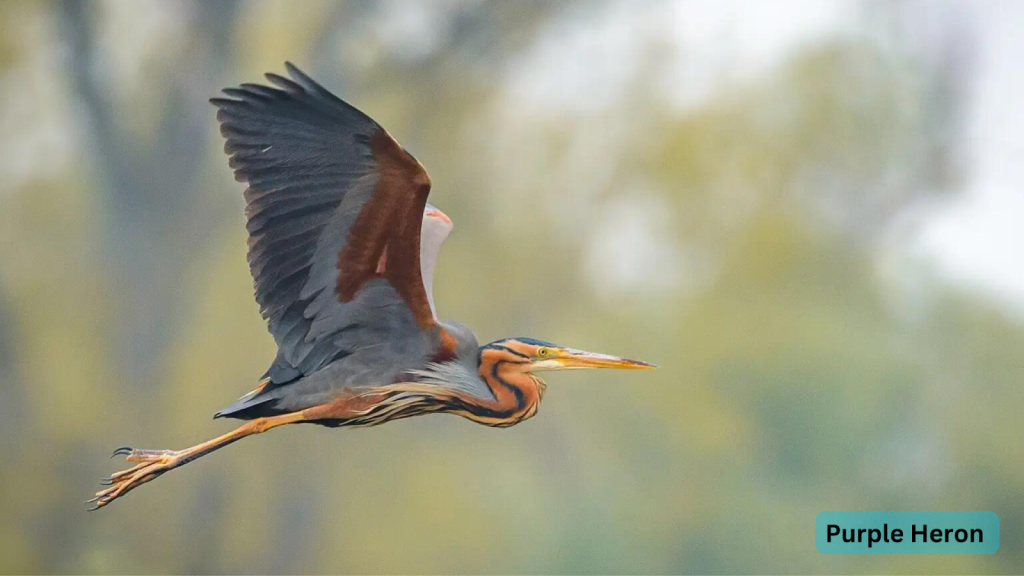
Interesting Facts About Long-Necked Birds
- Many long-necked birds have developed specialized vertebrae that allow for greater flexibility and reach, aiding in feeding and grooming.
- Some species, like flamingos, exhibit fascinating social behaviors and form large colonies, which can number in the thousands.
- Many long-necked birds, like cranes, undertake long migratory journeys across continents, often covering thousands of miles each year.
- Birds like herons and egrets use their long necks to spear fish and other prey in the water, demonstrating remarkable precision and speed.
- Long-necked birds often use their necks in elaborate courtship rituals. For example, cranes perform intricate dances that involve bowing, jumping, and wing-flapping.
- Some species, like the Whooping Crane, use their long necks to produce resonant, trumpet-like calls that can be heard over long distances.
- The long necks of birds like the ostrich help regulate body temperature, allowing them to stay cool in hot environments.
Frequently Asked Questions (F.A.Q)
Q1: Which bird has the longest neck?
The ostrich has the longest neck among birds, enabling it to spot predators from great distances and run at high speeds.
Q2: Why do some birds have long necks?
Long necks help birds access food sources that are otherwise out of reach, enhance their field of vision, and aid in social and mating displays.
Q3: How do long-necked birds hunt?
These birds often use their necks to strike quickly at prey, whether in water, tall grasses or on the ground, ensuring a successful catch.
Q4: Can long-necked birds fly?
Yes, many long-necked birds can fly. Species like herons, egrets, and cranes use their powerful wings and elongated necks to soar and navigate through the air efficiently. However, some long-necked birds, such as the ostrich, are flightless and rely on their speed and agility on land.
Q5: How do long-necked birds communicate?
Long-necked birds use a variety of vocalizations and physical displays to communicate. Cranes, for instance, are known for their loud, trumpet-like calls, especially during mating season. Herons and egrets may use quieter calls and body language, such as posturing and feather displays, to communicate with each other.
Wrapping Up
Exploring the world of long-necked birds reveals a fascinating array of adaptations and behaviors. Whether you’re curious about which is the bird that has a long neck or captivated by their unique traits, these birds demonstrate the marvels of nature. From the towering ostrich and its impressive speed to the elegant flamingo’s vibrant plumage, each species plays a vital role in its ecosystem. Understanding and appreciating these birds encourages conservation efforts to protect their habitats and ensure their survival for future generations. Their elegance and functionality make them true wonders of the avian world.


